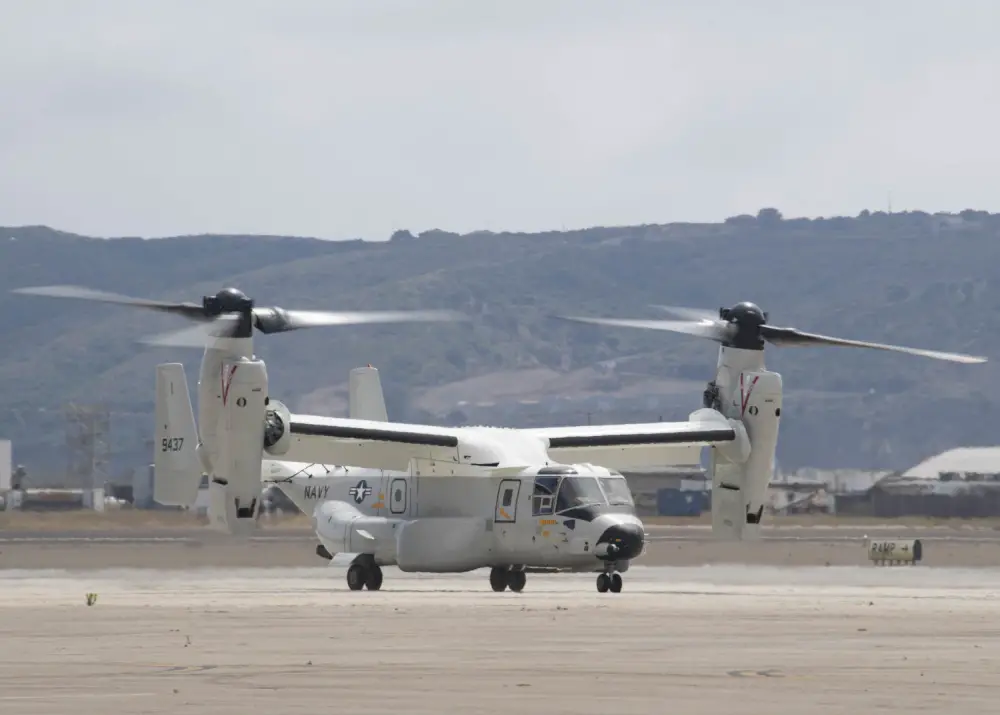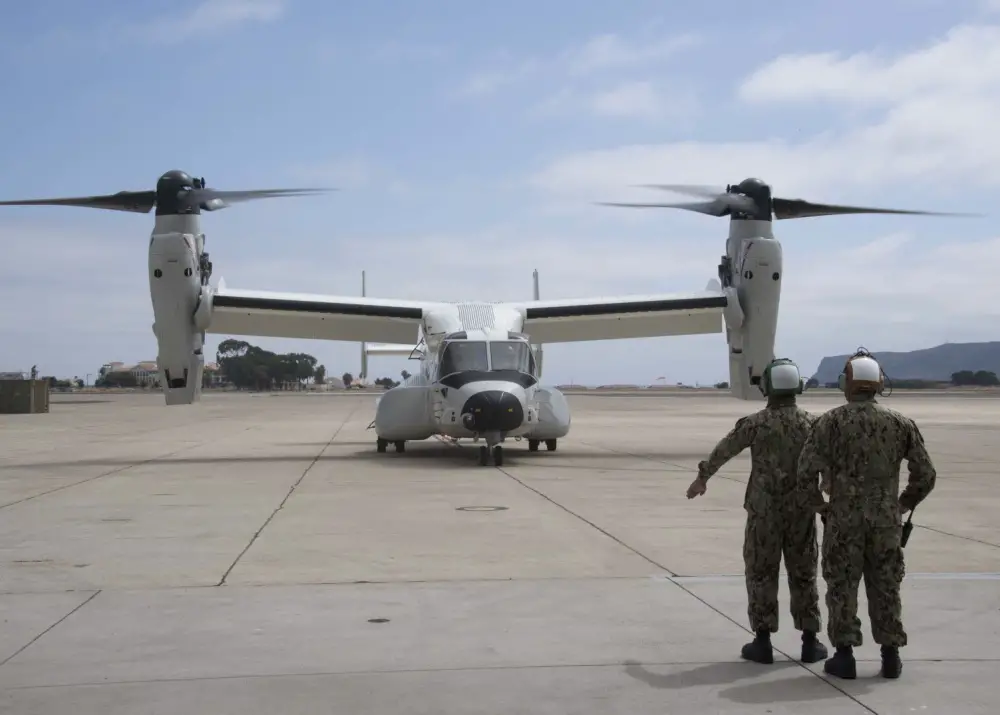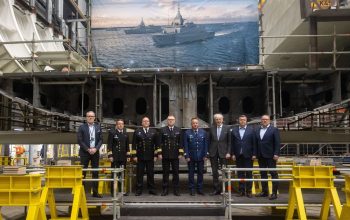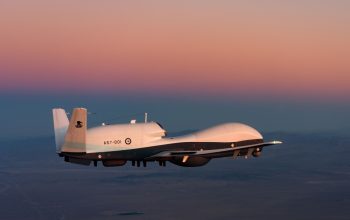The U.S. Navy’s first CMV-22B Osprey for operational use arrived at Naval Air Station North Island, June 22. The aircraft is assigned to the “Titans” of Fleet Logistics Multi-Mission Squadron (VRM) 30, the U.S. Navy’s first CMV-22B squadron. VRM-30 was established in 2018 to begin the Navy’s transition from the C-2A Greyhound to the CMV-22B Osprey. For the last four decades, the C-2A Greyhound has been providing logistic support to aircraft carriers throughout the Navy. However, the CMV-22B Osprey with increased operational range, faster cargo loading/unloading, increased survivability and enhanced beyond-line-of-sight will take over this essential mission. Herman also emphasized the importance of the highly trained Sailors who will work in and on these aircraft.
The CMV-22B Osprey is a variant of the MV-22B Osprey and will be responsible for conducting high priority cargo and passenger transport services in support of carrier strike groups and task forces. The Osprey is a tiltrotor aircraft that is capable of vertical take-off and landing, but transit as a turboprop aircraft. Between COVID-19 and the aircraft delivery schedule everyone stayed focused to deliver this helicopter to U.S. Navy. The CMV-22B is a critical component of the ‘Air Wing of the Future’ and provides the versatility, flexibility and capabilities needed in a high-end fight. The ability of the aircraft to integrate with fixed-wing operations, and operate at night, will give our carriers a new level of flexibility to adjust operations however required to accomplish the mission.

The Bell Boeing V-22 Osprey is an American multi-mission, tiltrotor military aircraft with both vertical takeoff and landing (VTOL), and short takeoff and landing (STOL) capabilities. It is designed to combine the functionality of a conventional helicopter with the long-range, high-speed cruise performance of a turboprop aircraft. The failure of Operation Eagle Claw during the Iran hostage crisis in 1980 underscored the requirement for a new long-range, high-speed, vertical-takeoff aircraft for the United States Department of Defense. In response, the Joint-service Vertical take-off/landing Experimental (JVX) aircraft program started in 1981. A partnership between Bell Helicopter and Boeing Helicopters was awarded a development contract in 1983 for the V-22 tiltrotor aircraft. The Bell Boeing team jointly produce the aircraft.
The Bell Boeing V-22 Osprey first flew in 1989, and began flight testing and design alterations; the complexity and difficulties of being the first tiltrotor for military service led to many years of development. The United States Marine Corps began crew training for the MV-22B Osprey in 2000, and fielded it in 2007; it supplemented and then replaced their Boeing Vertol CH-46 Sea Knights. The U.S. Air Force fielded their version of the tiltrotor, CV-22B, in 2009. Since entering service with the U.S. Marine Corps and Air Force, the Osprey has been deployed in transportation and medevac operations over Iraq, Afghanistan, Libya, and Kuwait. The U.S. Navy plan to use the CMV-22B for carrier onboard delivery (COD) duties beginning in 2021.



























